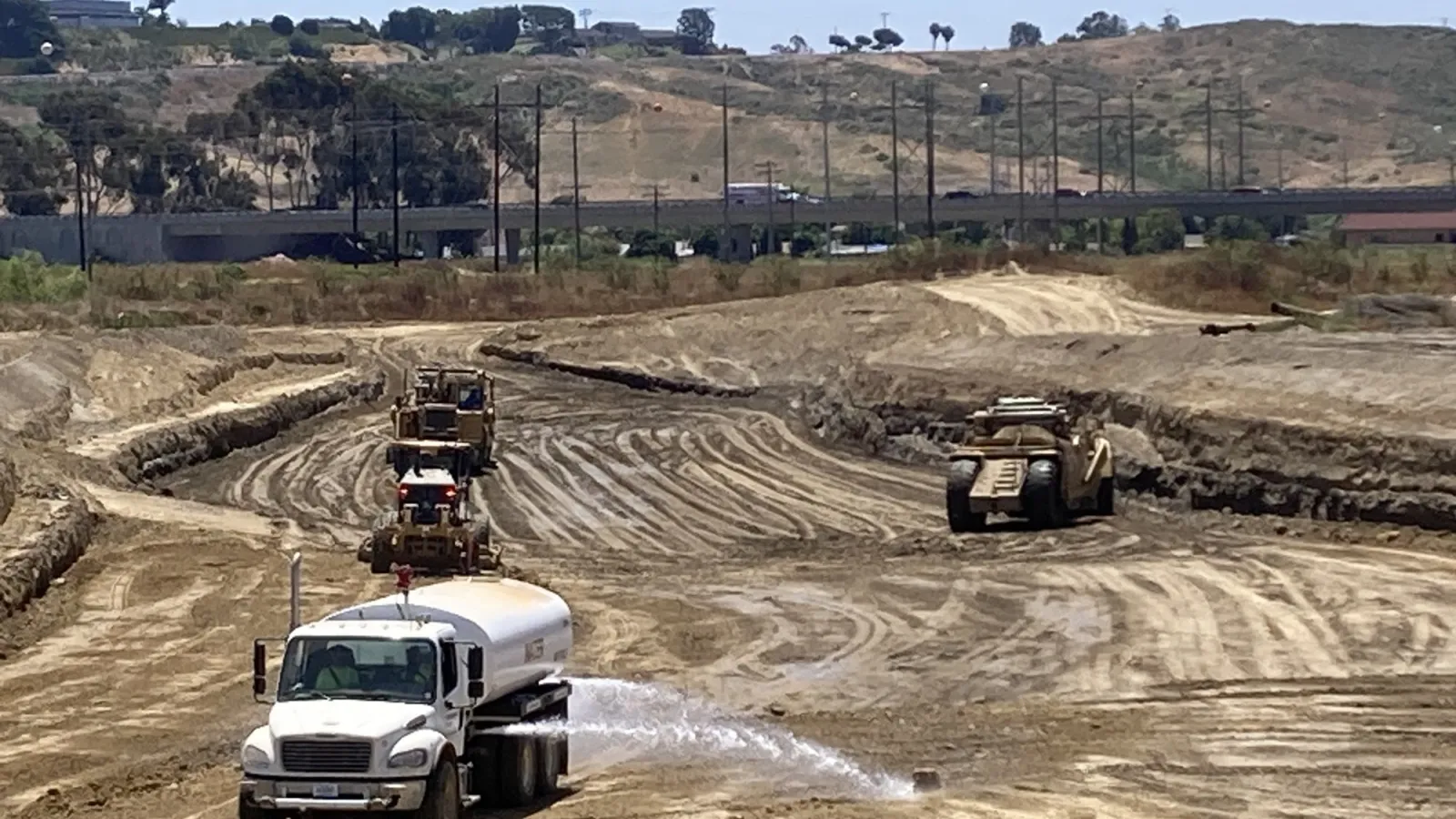By Phil Diehl
Copyright sandiegouniontribune

Construction will start next year on Ocean Kamp, a resort with San Diego County’s first artificial wave surfing lagoon, a 300-room hotel, retail shops and up to 667 homes in Oceanside’s San Luis Rey Valley, the developer said recently.
Grading of the 92-acre site began four years ago. Work has been off and on since then because of the complexity of the project and the array of uses proposed, said Jon Corn, an attorney and CEO of N4FL Worldwide, the partnership developing the site.
Site preparation has taken longer than expected, but “we’re very close to the end,” Corn said by telephone Monday. “Our goal is to be under construction by April or May of 2026.”
A lawsuit filed by the local nonprofit Preserve Calavera challenged the environmental effects of the project and suspended earth-moving for months.
The group reached a settlement with the developer in 2023 that reduced the number of homes from a maximum of 700 to no more than 667, added on-site affordable housing, and required all-electric facilities and other concessions.
Also complicating the groundwork was the discovery of Native American artifacts on the property, Corn said.
State law requires the developers to consult with representatives of the local San Luis Rey Band of Mission Indians to return any artifacts found to a safe place of the tribe’s choosing. In most cases, native artifacts are re-buried somewhere on the site, although the locations are not revealed because of security and privacy concerns.
Oceanside Councilmember Peter Weiss, who’s supported the resort project from the beginning, said he believes it will be well worth the wait.
“This is a significant opportunity,” Weiss said Tuesday. “It’s not unlike the soccer fields and Frontwave Arena (in the city’s El Corazon Park). These are destinations. The wave park and the hotel have the same potential.”
Both El Corazon venues attract out-of-town visitors and boost local businesses. The SoCal Sports Complex there has 20 grass soccer fields that host teams from throughout the state for weekend tournaments. Frontwave Arena holds indoor concerts, sporting events and other activities.
Ocean Kamp’s builders will focus on completing the wave pool before the opening of the 2028 Summer Olympics in Los Angeles, Corn said.
That’s in part because of the surge in tourism and the economy expected with the Olympics. However, progress on the recreational elements also will help the developers obtain construction financing for the hotel that’s part of the project.
A few Oceanside residents have expressed concerns about traffic and other issues related to the project, including the location near the city’s small airport. Some have questioned the logic of building an artificial surf lagoon so close to the ocean.
However, Oceanside’s business community and many residents, including surfers, support the development, saying it will provide much-needed housing and jobs.
The Oceanside Chamber of Commerce, the North County Economic Development Council, the Boys and Girls Clubs of Oceanside, the San Diego County Bike Coalition and other local groups have endorsed the project.
The city’s conditions of approval included a rough timeline for when the homes in the development are to be completed.
Construction on the first 350 homes in the development can begin before any of the commercial development, such as the wave pool, hotel, or retail, is underway. Commercial construction including the wave pool must show “significant progress” before the next 175 homes are started, Corn said, and the commercial portion must be finished before the final homes are built.
The company’s nearly finished earthwork has imported enough off-site fill material to raise the entire area by 10 to 12 feet at a cost of nearly $10 million, Corn said. The higher elevation was needed to bring the property above the flood plain and improve drainage for rain storms and wastewater.
The Oceanside City Council approved development plans for the project in 2022, and they remain essentially the same, he said. Yet there still could be tweaks to things such as the layouts of some facilities, buildings and internal streets as the city and other agencies sign off on various permits.
The site for many years was home to a drive-in theater and a weekend swap meet. The drive-in closed in 1999, and the movie screens were demolished in 2016. The swap meet ended in 2019.
The city approved the construction of a big-box shopping center called The Pavilion on the property in 2008.
The Pavilion was to be Oceanside’s largest shopping center, with 4,000 parking spaces and 19 commercial buildings, including mostly big-box retail stores, boutiques, a health club, a movie theater and restaurants.
However, the national economy slowed down, more people turned to internet shopping, and the project never broke ground.



